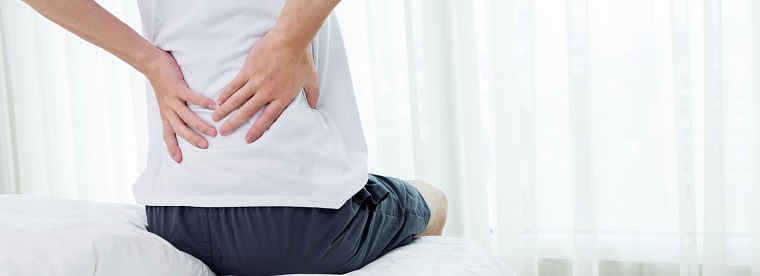Sadly, most of us don’t get enough to drink. Kidney stones tend to be more common in areas of the world with warmer temperatures, where the heat makes it easier to get dehydrated. We call this the “Kidney Stone Belt,” and it includes Maryland, Virginia and Washington, D.C., among other places.
The simple answer for dehydration is to drink more. Water is best, of course. Citrus fruits like lemon can lower the risk for kidney stones because they contain a compound called citrate. Therefore, adding lemon to water or drinking lemonade also can help.
Of course, drinking more water is easier for some people than others. I’ve seen patients who come in with kidney stones, and they tell me, “I have no idea what my risk factor is.” Then I find out they don’t drink water all day because they can’t go to the bathroom during the workday.
Avoid soda and other drinks that are high in sugar when possible. Sugar alters the way the body absorbs minerals and can increase the risk for kidney stones. Sugar also increases the acid levels of urine, which makes stones more likely to form.
A diet to prevent kidney stones: They are what we eat
It’s not just the amount of fluid in urine that determines a person’s risk of kidney stones. This risk also is based on the amount of waste products the kidneys have to filter from the blood. When there are more of certain types of waste products relative to the amount of fluid in urine, the risk of kidney stones goes up.
One of the reasons our risk for kidney stones has increased so much since the 1970s is because our diets have changed since that time. Two of the main dietary culprits for kidney stones are proteins and salt.
Protein
The modern American diet contains a lot more protein than it did in the 1970s, especially animal-based protein. We consume animal-based protein in the form of:
- Chicken and other poultry
- Eggs
- Red meat
- Seafood
I tell my patients to limit their protein intake to two servings per day. That takes some planning and thought about what you eat. If you know you’re having fish for dinner, and you had sausage with breakfast, avoiding that chicken-salad sandwich for lunch is one way to control your protein.
Salt
The salt, or sodium, that we eat plays a huge role in the formation of kidney stones. Since the 1970s, a lot more of the food we eat is processed and packaged, and that means more salt. Plus, people are eating saltier foods and more of them.
For example, just 1 ounce of potato chips can have about seven to 10 percent of the average person’s daily recommended maximum serving of salt. And as the U.S. Department of Agriculture notes, an average single-patty plain cheeseburger at a fast-food restaurant has 469 milligrams of salt—more than 20 percent of the maximum daily serving of 2,300 milligrams per day.
That would be bad enough if people stuck to the upper limits of salt intake per day. But most people eat much more salt than the recommended maximum amount. As noted by the U.S. Department of Health and Human Services, the average woman consumes 2,980 milligrams of salt per day. And the average man consumes 4,240 milligrams of salt per day—nearly twice the recommended maximum. So people are putting tremendous loads of salt into their systems, and the kidneys have to filter all of that salt out.

